Understanding the Importance of Aging Biomarkers
As we age, the changes in our bodies go far beyond the ticking of the traditional calendar. Biological age, informed by biomarkers of aging, offers a more insightful reflection of our physiological state than chronological age alone. Monitoring these biomarkers can empower individuals to track their health, evaluate interventions, and potentially extend healthspan. This article explores the key concepts, methods, and technologies for tracking and interpreting aging biomarkers over time, providing a roadmap for personalized aging health management.
Defining Biomarkers of Aging: What They Are and Why They Matter
What are the main categories of aging biomarkers?
Aging biomarkers can be grouped into several broad categories, each capturing different aspects of the aging process. Molecular biomarkers include DNA methylation patterns, telomere length, and histone modifications, which reflect cellular and genetic changes over time. Biological or physiological biomarkers encompass functional measures such as gait speed, muscle strength, and cardiovascular health indicators like blood pressure and cholesterol levels. Cellular markers, such as the presence of senescent cells and DNA damage indicators, provide insights into tissue aging.
Emerging digital health biomarkers leverage wearable devices and mobile health apps to monitor activity levels, sleep patterns, and other behaviors influencing aging. Radiographic and histological markers examine tissue and organ aging via imaging and tissue analysis. This multi-dimensional approach allows for a comprehensive evaluation of biological age, which often differs from chronological age.
What are the key biomarkers of aging and their significance?
Among the critical biomarkers are epigenetic modifications, notably DNA methylation, which serve as biological clocks—predicting an individual's biological age more accurately than chronological years. For example, DNA methylation-based clocks, such as Horvath’s clock, correlate strongly with physical health, disease risk, and lifespan. Telomere length, the protective end-caps of chromosomes, shortens with age and is linked to cellular senescence and disease susceptibility.
Additionally, immune markers like the accumulation of senescent T cells and the presence of inflammatory cytokines (CRP, IL-6) indicate immune system aging and inflammation, both playing roles in age-related diseases. Histone modifications and markers of DNA damage also serve as additional insights into cellular aging. Collectively, these biomarkers help predict health outcomes, guide interventions, and deepen our understanding of the complex biological processes driving aging.
Methods and Technologies for Measuring Aging Biomarkers
What methods and technologies are used to measure biomarkers of aging?
Biomarkers of aging are primarily measured through biological samples such as blood, urine, and saliva. Blood tests are the most common and provide a wealth of information, including lipid profiles (cholesterol levels), renal function markers like creatinine, thyroid hormones, and various circulating proteins. These tests help identify molecular changes associated with aging, such as inflammation markers, hormonal shifts, and metabolic health indicators.
Urine and saliva samples complement blood analyses by offering biochemical and molecular markers, including metabolites, hormones, and nucleic acids. These samples are advantageous due to their non-invasive collection, making repeated assessments easier.
Physiological monitoring devices also play a crucial role by tracking parameters like blood pressure, heart rate, and respiratory function. Devices such as wearable fitness trackers and blood pressure monitors allow for continuous or frequent data collection.
Recent advances include at-home testing kits that enable individuals to perform blood spot tests, saliva tests, and even urine analysis in the comfort of their homes. These technologies utilize microfluidic systems and user-friendly interfaces to provide rapid results, making regular monitoring accessible and practical.
New imaging techniques like MRI and PET scans are employed at research centers to visualize neurodegenerative changes and organ health, adding a different layer to biomarker assessments.
In summary, the measurement of aging biomarkers involves a combination of traditional laboratory tests, innovative portable devices, and emerging at-home testing platforms, fostering a comprehensive approach to understanding and tracking biological aging.
Scientific Approaches and Research Techniques in Aging Biomarker Assessment
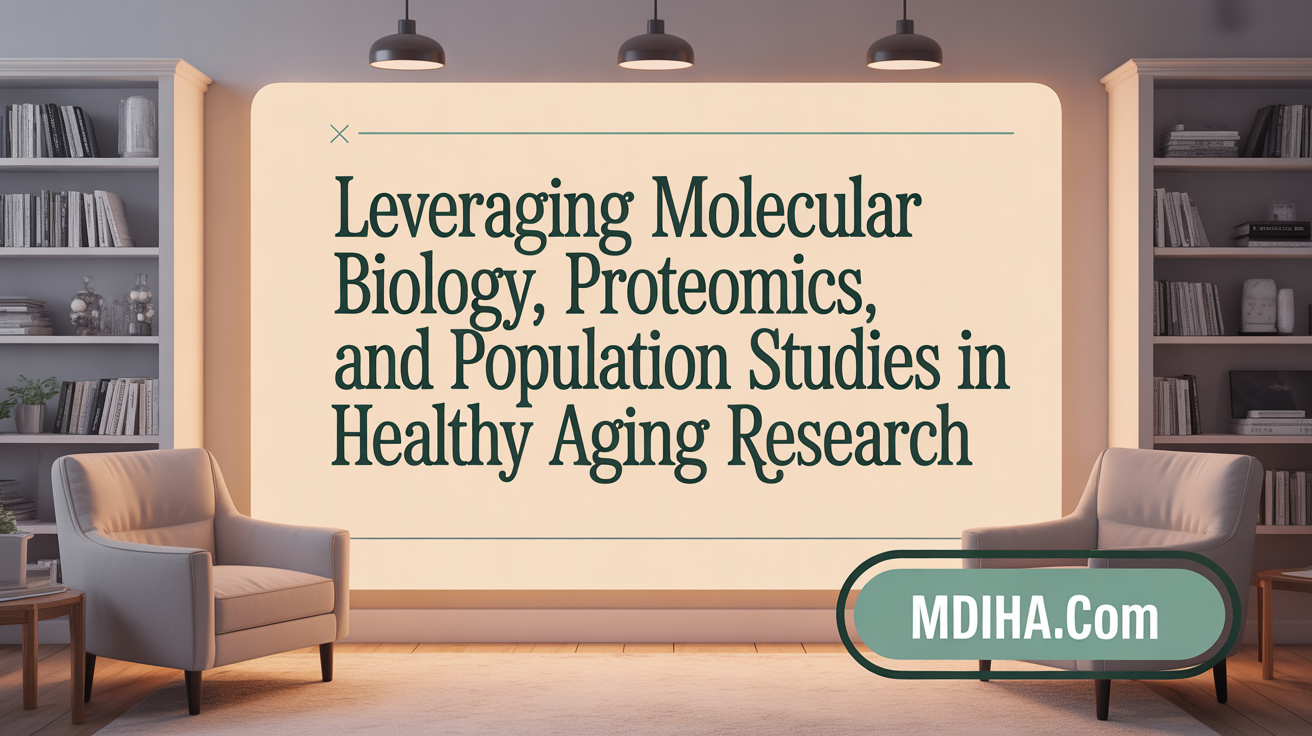 Research in aging biomarkers employs a variety of advanced scientific methods to understand and measure the biological aging process. Molecular biology techniques like epigenetic, proteomic, and genomic analyses are fundamental in identifying specific biological indicators associated with aging.
Research in aging biomarkers employs a variety of advanced scientific methods to understand and measure the biological aging process. Molecular biology techniques like epigenetic, proteomic, and genomic analyses are fundamental in identifying specific biological indicators associated with aging.
Epigenetic analysis focuses on DNA methylation patterns, which serve as biological clocks that can reliably estimate an individual’s biological age. Tools such as DNA methylation arrays and next-generation sequencing are used to measure these modifications across the genome, correlating methylation changes with aging phenotypes.
Proteomics involves the large-scale study of proteins, including their expression, modifications, and interactions. This approach helps identify circulating proteins—like GDF15, β2-microglobulin, and inflammatory cytokines—that serve as systemic biomarkers reflecting tissue health and aging-related inflammation.
Genomic analysis, often utilizing whole-genome sequencing and SNP genotyping, helps explore genetic variants and their influence on aging-related traits. Although individual genetic factors tend to have a limited role compared to environmental influences, they still provide valuable insights into the genetic predispositions impacting longevity.
Longitudinal population studies are crucial for validating the predictive capacity of these biomarkers. By tracking individuals over extended periods, researchers can observe how biomarkers change over time and how such variations relate to health outcomes, disease onset, and lifespan.
However, the development of aging biomarkers faces significant challenges. Ensuring reliability across different populations and standardizing measurement protocols remain critical hurdles. Variability in technical methods and population-specific factors necessitate establishing consensus frameworks and test standards.
In response, the scientific community is advocating for validated, reproducible biomarkers that can be widely adopted in clinical settings. The integration of multi-modal data—combining molecular, cellular, and systemic markers—aims to create comprehensive aging assessments, paving the way for personalized interventions to improve healthspan and lifespan.
Tracking Biological Age: Tools for Measuring Progression and Improvement
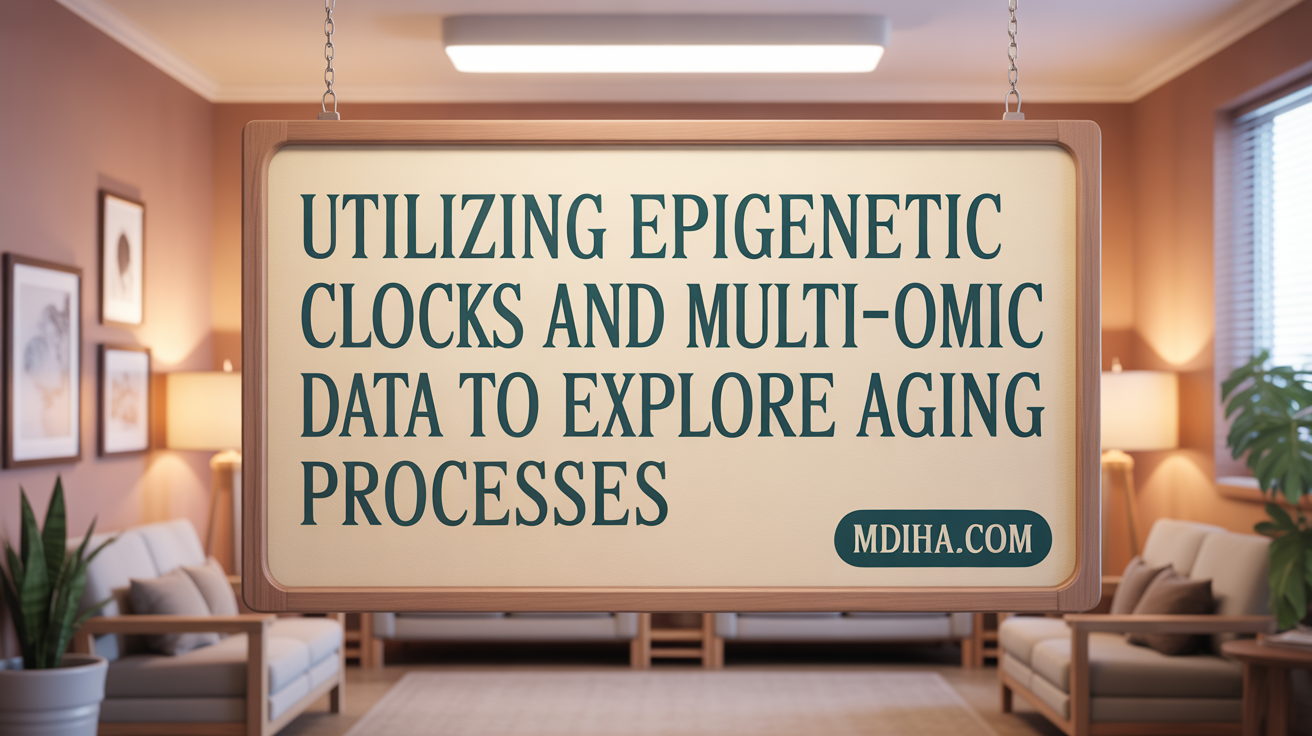
How is biological age tracked and assessed for progression or improvement?
Biological age assessment relies on measuring various molecular and cellular biomarkers that change with aging. DNA methylation-based clocks, such as Horvath's clock, PhenoAge, and GrimAge, are among the most advanced tools, providing estimates of biological age that correlate strongly with chronological age.
Longitudinal monitoring of these biomarkers allows researchers and clinicians to observe how an individual’s biological age changes over time. For example, shifts in DNA methylation patterns can indicate acceleration or deceleration in biological aging, which may be influenced by lifestyle, health interventions, or treatments.
In addition to epigenetic clocks, multi-omic approaches combine transcriptomic, proteomic, and metabolomic data to generate composite age predictions. These models, often built using machine learning algorithms, can capture complex biological processes underlying aging.
Some models calculate a 'Pace of Aging', reflecting how quickly an individual is aging biologically compared to their chronological age. This approach enables not just the assessment of current biological age but also monitoring changes over time, which is vital for evaluating the effectiveness of anti-aging strategies.
Despite promising developments, the standardization and validation of these biomarkers across populations and study settings are ongoing challenges. Consistent measurement techniques and large-scale validation efforts are required to make biological age tracking a routine part of personalized healthcare.
Interpreting Changes in Aging Biomarkers to Understand Health Progress or Decline
Understanding how aging biomarkers evolve over time is crucial for assessing an individual’s health trajectory. Longitudinal studies tracking these markers reveal patterns that distinguish between healthy aging and accelerated decline.
Monitoring biomarker levels such as telomere length, inflammatory cytokines, and DNA methylation patterns provides insights into biological age. For instance, stabilized or lengthening telomeres may indicate effective cellular maintenance, while shortening telomeres suggest faster cellular aging. Likewise, reduced levels of inflammatory markers like CRP or IL-6 reflect decreased systemic inflammation, often associated with better health and slowed aging.
Changes in epigenetic age, as measured by DNA methylation clocks, also inform about biological aging pace. A decline or stabilization in epigenetic age relative to chronological age points to successful interventions or healthy aging processes. Conversely, increasing disparities between biological and chronological age suggest deterioration and higher disease risk.
Integrating different data types enhances interpretation. Molecular markers (like telomeres and methylation) coupled with cellular indicators (e.g., senescence markers) and physiological assessments (such as gait speed or cardiovascular function) provide a comprehensive view of health status.
Overall, observing positive trends—such as improved molecular profiles, better physical performance, and diminished systemic inflammation—indicates health progress. Deterioration in these markers signals the need for intervention. Continuous, multi-modal tracking allows personalized adjustments to lifestyle or therapies, aiming to slow biological aging and promote a healthier lifespan.
For more detailed insights, searching "Interpreting aging biomarker changes over time" can offer extensive examples of longitudinal analyses used in aging research.
Key Molecular and Cellular Biomarkers: DNA Methylation, Telomeres, and Cellular Senescence
What are the key biomarkers of aging and their significance?
Biomarkers of aging are biological indicators that reflect the structural and functional changes occurring in the body as it ages. Among these, DNA methylation patterns serve as an epigenetic clock with remarkable accuracy, providing insights into an individual’s biological age beyond mere chronological age. These methylation patterns change predictably with age and are useful for monitoring aging processes and assessing health risks.
Telomere length is another crucial biomarker. Telomeres are protective caps at the ends of chromosomes that shorten with each cell division. As telomeres become critically short, cells enter a state of senescence or apoptosis, contributing to tissue aging and dysfunction. Conversely, telomerase, an enzyme that can extend telomeres, plays a role in counteracting cellular aging, especially in stem and germline cells.
Cellular senescence markers, such as p16^INK4a and p21, indicate cells that have stopped dividing but remain metabolically active. These cells often secrete inflammatory factors known as the senescence-associated secretory phenotype (SASP), which promotes tissue inflammation and deteriorates tissue function. Inflammatory markers like cytokines further illustrate the connection between cellular aging and systemic inflammation.
How do these biomarkers help in aging research?
By measuring DNA methylation, researchers can calculate an epigenetic age, which correlates strongly with health outcomes and lifespan. Telomere length provides insights into cellular replicative capacity and organismal aging. Markers of cellular senescence and inflammation help understand tissue health, immune system decline, and age-related diseases.
These molecular and cellular markers enable scientists to track the progression of aging, evaluate the impact of lifestyle or therapeutic interventions, and develop personalized strategies to improve healthspan. Combining these biomarkers offers a comprehensive view of biological age, paving the way for advances in anti-aging medicine.
Additional insights on aging biomarkers
Research continues to refine the measurement of cellular senescence and DNA methylation. For instance, the development of aging clocks based on DNA methylation data has predicted chronological and biological age with high accuracy. Understanding the interplay between telomeres, epigenetics, and cellular senescence is key to unlocking new interventions for age-related decline.
For those interested, further exploration can be done under the search query "DNA methylation and telomere biomarkers in aging," which covers a broad scope of recent research developments in this field.
Physiological and Functional Biomarkers for Longevity Monitoring
What indicators and measures are used to evaluate changes in aging-related health markers?
Assessing how individuals age involves a variety of physiological and functional biomarkers. These indicators help track the decline in bodily systems, predict health risks, and guide interventions to promote healthy aging.
Physical performance measures are among the most straightforward and reproducible assessments. Gait speed, grip strength, and VO2max are widely used to evaluate mobility, muscle strength, and cardiovascular fitness, respectively. For example, slower gait speed and weaker grip strength have been linked to higher risks of morbidity and mortality, while VO2max provides insights into cardiorespiratory capacity.
Beyond physical tests, clinical biomarkers offer detailed information on organ function and disease risk. Cardiovascular markers include blood pressure measures, cholesterol levels (total, LDL, HDL), and homocysteine. Elevated blood pressure and abnormal lipid profiles are associated with increased risk of stroke, heart attack, and mortality.
Metabolic indicators, such as blood glucose, triglycerides, and glycosylated hemoglobin, reflect the body's ability to manage energy and are linked to conditions like diabetes and cognitive decline. Meanwhile, markers of inflammation, including C-reactive protein (CRP) and interleukin-6 (IL-6), signal chronic low-grade inflammation that accelerates aging processes and disease development.
Neurological health is increasingly monitored through proteins like amyloid beta and tau, which are associated with Alzheimer’s disease and dementia. Although not yet standard in population screening, these markers provide valuable insights into neurodegenerative changes.
Advances in imaging technology and wearable devices are expanding the scope of aging assessment. Techniques like MRI and PET scans enable visualization of the brain's structural and pathological changes, such as amyloid plaques and brain atrophy.
Wearable technology—smart watches and fitness trackers—collect real-time data on activity levels, heart rate, sleep patterns, and even blood oxygenation. These digital and functional biomarkers allow continuous, non-invasive monitoring of aging-related health changes.
Combining these methods offers a comprehensive picture of the aging process, enabling personalized strategies to delay or mitigate age-related decline.
Evaluating Interventions to Improve Aging Biomarkers
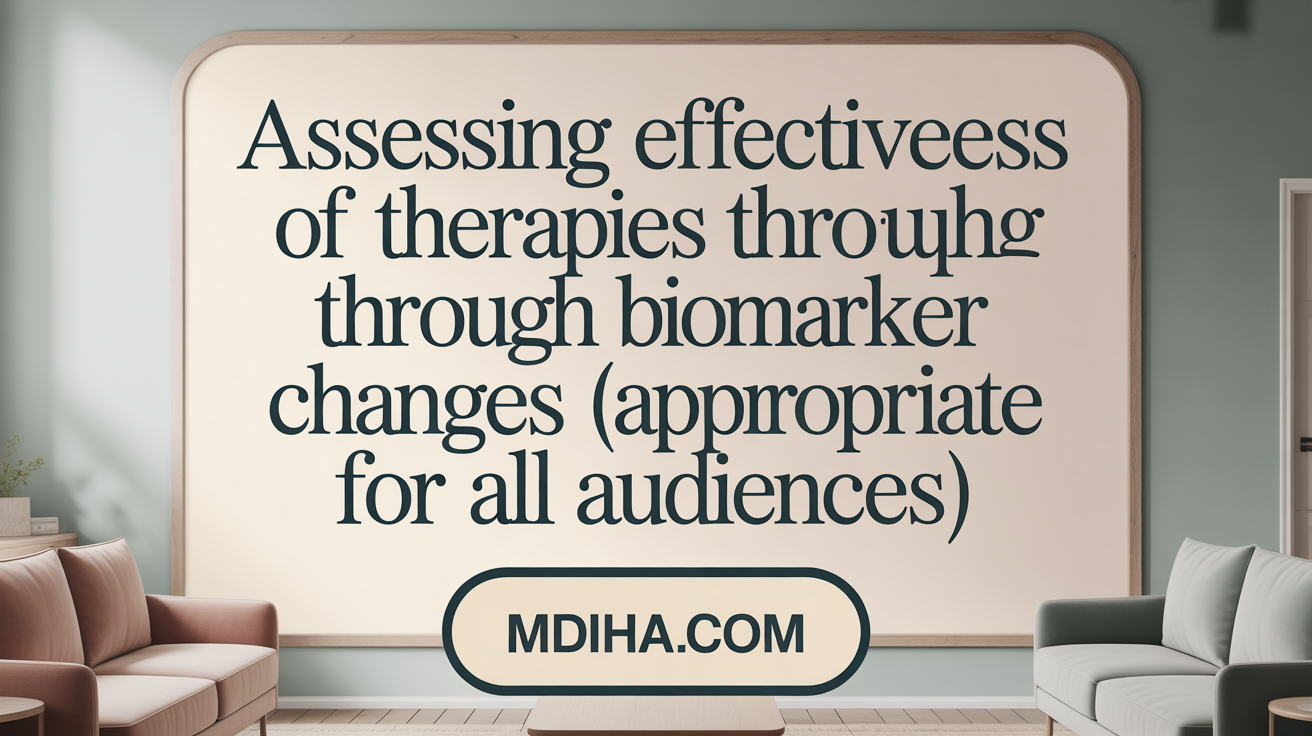
How are interventions aimed at improving aging biomarkers evaluated?
The effectiveness of anti-aging interventions is assessed by measuring changes in various biomarkers before and after treatment. This includes molecular indicators such as epigenetic clocks, which analyze DNA methylation patterns, as well as physiological metrics like gait speed and organ function markers.
Reliable biomarkers provide insights into shifts in biological age, allowing researchers and clinicians to determine whether a treatment slows, halts, or reverses aspects of aging.
For instance, in the CALERIE trial, a calorie restriction intervention, the DNA methylation-based DunedinPoAm biomarker predicted changes in the Pace of Aging, demonstrating its responsiveness to lifestyle modifications.
Similarly, the TAME (Targeting Aging with Metformin) trial plans to evaluate the impact of pharmacological agents like metformin on aging biomarkers, aiming to validate their use in clinical settings.
Tracking these biomarkers over time enables validation of intervention efficacy, guiding personalized treatment strategies and advancing the development of anti-aging therapies.
Challenges and Recommendations for Translating Aging Biomarkers into Clinical Practice
What challenges exist in translating aging biomarkers from research to practical use, and what recommendations address these challenges?
The development of reliable biomarkers of aging faces several hurdles before they can be widely adopted in clinical practice. One of the primary issues is the lack of standardized protocols for measuring and interpreting these biomarkers. Variability in techniques, platforms, and scoring systems makes it difficult to compare results across different studies and populations.
Moreover, many biomarkers show promise in research settings but do not yet have clear, actionable thresholds for clinical decision-making. This gap leads to difficulties in translating biomarker data into meaningful health interventions for individual patients.
Another challenge is the heterogeneity of aging among individuals, which complicates the interpretation of biomarker results. Factors such as genetics, environment, lifestyle, and comorbidities influence biomarker levels, making it harder to establish universal reference points.
Additionally, integrating aging biomarkers into existing healthcare systems requires not only validation but also cost-effective and accessible testing methods. Currently, some biomarker assays may be expensive or require specialized equipment, limiting their practical use.
To overcome these barriers, experts recommend establishing standardized validation frameworks that can be applied across different laboratories and populations. Multicenter validation studies are crucial to testing the reproducibility and robustness of biomarkers.
There is also a need for creating practical guidelines that link biomarker levels to specific health actions or interventions, helping clinicians make informed decisions. Increasing the affordability and accessibility of biomarker testing is vital for their routine use.
Collaboration among researchers, clinicians, and policymakers is essential toward developing standardized, validated biomarkers that can support personalized aging management and improve healthspan outcomes.
Emerging Technologies: Deep Aging Clocks and Digital Biomarkers
How machine learning and AI are advancing aging estimation
Recent developments in artificial intelligence (AI) and machine learning have revolutionized the way scientists estimate biological age. Deep learning algorithms analyze vast datasets, including genetic, epigenetic, imaging, and clinical data, to develop 'deep aging clocks.' These clocks can predict individual biological age with remarkable accuracy, often within a few years of chronological age. Such sophisticated models can also identify deviations from typical aging patterns, which may indicate health risks or the impact of lifestyle factors.
Combining multi-omic and imaging data for better insights
To capture the complexity of aging, researchers are integrating diverse data types—known as multi-omic approaches—combining genomics, transcriptomics, proteomics, metabolomics, and epigenomics. When paired with advanced imaging techniques like MRI, PET scans, and ultrasound, these integrated datasets can provide a comprehensive view of systemic and organ-specific aging processes. This multidimensional data fusion helps refine biological age estimates and uncovers subtle early changes that precede clinical symptoms.
The role of digital biomarkers from wearables and sensors
Digital biomarkers obtained from wearable devices and sensor technologies are transforming aging research. Devices measuring heart rate, activity levels, sleep patterns, and gait speed generate continuous, real-time data. These digital markers, analyzed with AI, facilitate non-invasive, cost-effective monitoring of physiological functions associated with aging. They enable personalized health tracking, early detection of decline, and assessment of intervention effectiveness in real-world settings.
| Technology | Data Type | Application | Benefits |
|---|---|---|---|
| Deep learning models | Blood tests, gene profiles, imaging | Accurate biological age prediction | High precision, individual risk profiling |
| Multi-omic platforms | Genomics, proteomics, epigenomics | Understanding systemic aging processes | Comprehensive insights into aging pathways |
| Wearable sensors | Heart rate, activity, gait | Continuous health monitoring | Non-invasive, real-time feedback |
These technological advances hold tremendous potential for personalized aging assessments, early intervention strategies, and the development of targeted therapies that can delay or reverse age-related decline.
Holistic Approaches: Combining Molecular, Physiological, and Lifestyle Data
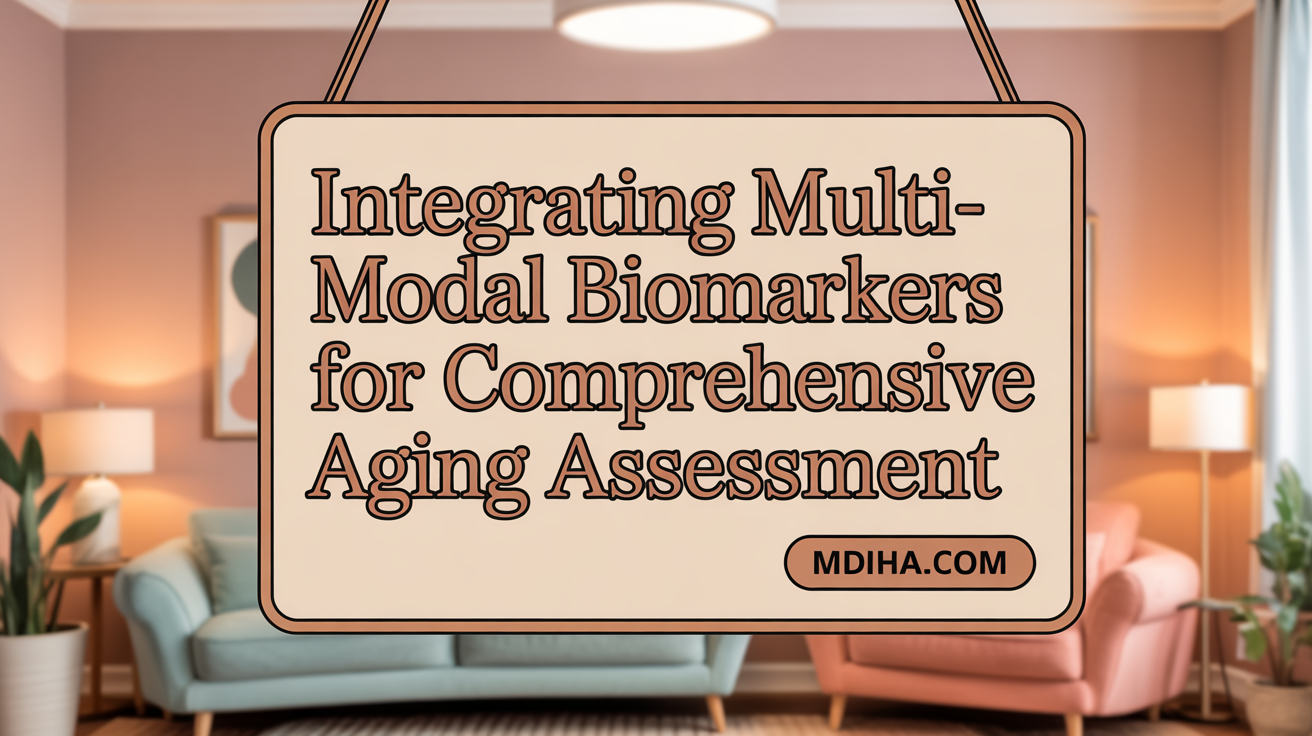
Multi-modal aging biomarker frameworks
Modern research emphasizes a comprehensive approach to understanding aging by integrating various types of biomarkers. These frameworks combine molecular indicators like DNA methylation clocks, such as Horvath's clock and DNAm PhenoAge, with cellular markers like telomere length and cellular senescence indicators such as p16^INK4a. Physiological markers—like gait speed, grip strength, and cardiorespiratory fitness (V̇o2max)—provide functional insights, while systemic biomarkers, including blood pressure, cholesterol levels, and inflammatory cytokines like CRP and IL-6, help assess overall health status.
This multi-layered approach allows for a more accurate assessment of an individual's biological age (BA) than relying solely on chronological age (CA). It also enables tracking of how various factors influence aging trajectories, facilitating targeted intervention planning.
Role of lifestyle factors in biomarker modulation
Lifestyle choices have a profound impact on these aging biomarkers. Regular physical activity, balanced nutrition, stress management, and sleep quality can positively influence telomere length, reduce systemic inflammation, and improve mitochondrial function. For example, exercise has been linked to longer telomeres and decreased oxidative stress markers like MDA.
Dietary interventions such as caloric restriction or Mediterranean-style diets can modulate epigenetic patterns and metabolic biomarkers, slowing biological aging. Stress management techniques reduce levels of cortisol and other stress hormones, which are associated with accelerated aging and immune senescence.
Monitoring these biomarkers over time provides insight into how lifestyle modifications can slow aging processes and improve healthspan.
Personalized health monitoring and intervention strategies
Advances in biomarker technology enable personalized health assessments. Regular testing of molecular markers such as DNA methylation age, telomere length, and inflammatory cytokines informs individuals about their biological aging progress.
This information guides tailored interventions, including lifestyle changes, nutritional plans, and medical treatments aimed at reducing risk factors and improving functional capacity. For instance, a person showing accelerated biological age might benefit from increased physical activity or anti-inflammatory therapies.
Furthermore, integrating data from digital health devices—like activity trackers and heart rate monitors—alongside molecular biomarkers creates a comprehensive health profile. Such an approach supports proactive management of aging, improving quality of life and potentially extending healthspan.
| Biomarker Type | Example Indicators | Role in Aging Monitoring | Application in Personalized Strategies |
|---|---|---|---|
| Molecular | DNA methylation clocks, telomere length | Estimate biological age and aging rate | Tailor lifestyle and treatment plans |
| Cellular | p16^INK4a, SA-β-gal activity | Detect cellular senescence | Intervention targeting cellular health |
| Physiological | Gait speed, grip strength, V̇o2max | Assess functional decline | Optimize physical activity regimens |
| Systemic | Blood pressure, CRP, cholesterol | Evaluate systemic health and inflammation | Guide medical and lifestyle interventions |
These combined strategies exemplify the move toward holistic aging management, where multi-modal biomarker surveillance informs customized interventions to promote healthy aging.
Future Directions: Towards Validated Biomarkers for Personalized Aging Care
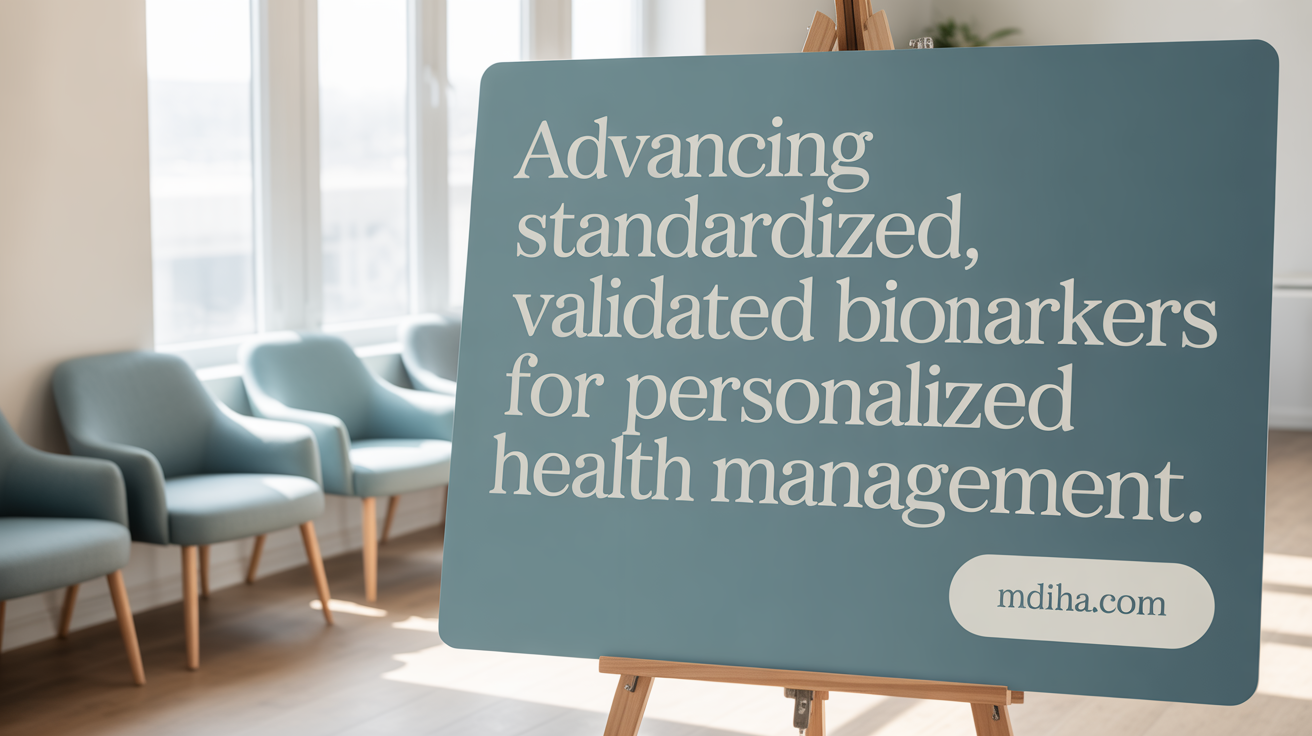
How are consortia efforts like the Biomarkers of Aging Consortium advancing the field?
Collaborative efforts such as the Biomarkers of Aging Consortium play a vital role in standardizing and validating aging biomarkers. They coordinate research across multiple institutions to identify reliable, non-invasive, and predictive indicators of biological age. These initiatives focus on establishing consensus on measurement techniques, endpoints, and clinical relevance, facilitating the translation of research findings into practical healthcare tools.
What ongoing validation trials are shaping the future of aging biomarker use?
Several large-scale longitudinal trials are underway to validate promising biomarkers such as epigenetic clocks (including Horvath’s clock and DunedinPoAm) and physiological measures like gait speed and muscle strength. For example, the TAME trial aims to assess whether interventions like metformin can modulate these biomarkers and improve healthspan. These studies are crucial for confirming the predictive power of biomarkers and their responsiveness to anti-aging therapies.
What are the prospects for clinical application and personalized medicine?
As validation progresses, aging biomarkers are increasingly poised to become integral to personalized health management. They can help tailor interventions based on an individual's biological age rather than chronological age, enabling early detection and targeted treatment of age-related decline. Future clinical practice may involve routine biomarker testing, integrating molecular, cellular, and functional data to optimize aging trajectories and improve quality of life.
| Effort | Focus Area | Impact | Future Promise |
|---|---|---|---|
| Biomarkers of Aging Consortium | Standardization and collaboration | Accelerates validation | Establishes reliable benchmarks |
| Validation Trials | Longitudinal assessment of biomarkers | Confirms predictive value | Supports translation to clinics |
| Clinical Application | Personalized health strategies | Enhances early detection and intervention | Promotes healthy aging |
Embracing Biomarkers for a Personalized Aging Journey
Monitoring your aging biomarkers offers a gateway to understanding your unique biological aging process, far beyond mere calendar years. With advances in molecular biology, technology, and clinical science, tracking improvements or declines in these biomarkers equips you to make informed lifestyle and therapeutic decisions. While challenges in biomarker validation and clinical application remain, ongoing research and emerging tools promise a future where aging can be dynamically managed and personalized. Embracing this biomarker-centric approach today empowers healthier, longer lives with greater quality and autonomy.
References
- Biomarkers of Aging and Relevant Evaluation Techniques
- Biomarkers of aging for the identification and evaluation of longevity ...
- Biomarkers of ageing: Current state‐of‐art, challenges, and ...
- Deep biomarkers of aging and longevity: from research to applications
- Biomarkers selection and mathematical modeling in biological age ...
- BIOMARKERS RELATED TO AGING IN HUMAN POPULATIONS
- Longevity Testing Guide: 15 Biomarkers for Healthy Aging - Jinfiniti
- Biomarkers of aging: from molecules and surrogates to physiology ...
- Advances in biomarkers and diagnostic significance of organ aging
- Biomarker Testing and Anti-Aging: Tracking Your Body's Health at a ...
